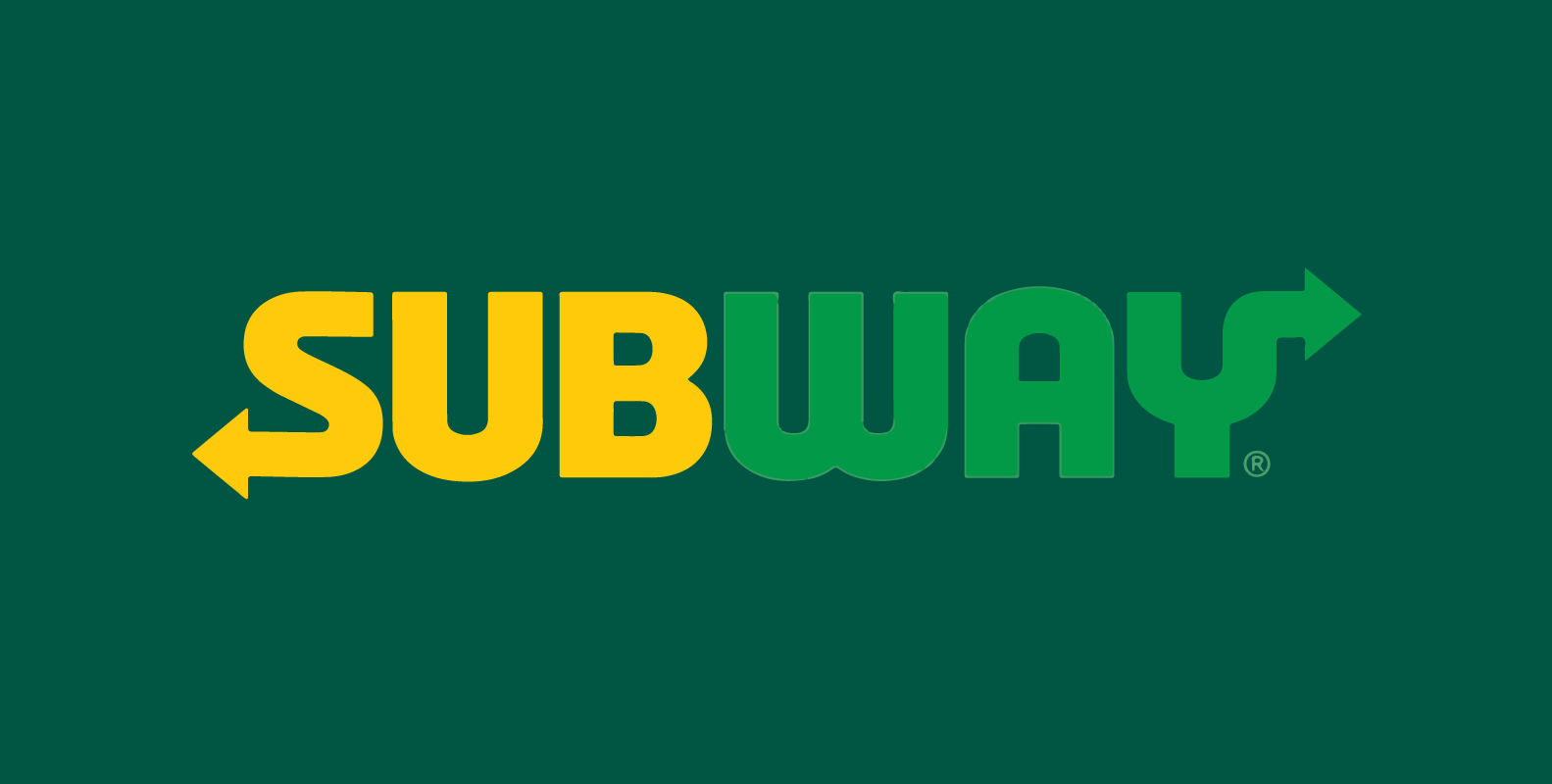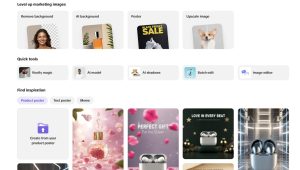Are you curious about the Subway brand and how it has evolved over the years? Subway has been a popular fast-food chain for decades, known for its fresh ingredients and customizable sandwiches. But how has the brand changed to stay relevant in an ever-changing market? In this article, we will explore the history of Subway branding and how it has adapted to meet the needs of its customers.
One of the most significant changes to the Subway brand in recent years has been its logo and visual identity. In 2023, Subway revealed a bold new logo and symbol, signaling a new direction for the brand. The new logo features a simplified design, with a bold yellow arrow pointing forward, symbolizing Subway’s commitment to innovation and progress. This change was part of a larger effort to modernize the brand and appeal to a younger, more health-conscious audience.
In addition to the new logo, Subway has also made changes to its marketing and advertising strategies. The brand has focused on customer segmentation, prioritizing limited resources, and responding to competitive pressures. Subway has also emphasized its commitment to sustainability, using eco-friendly packaging and promoting plant-based options on its menu. Overall, Subway’s branding has evolved to reflect changing consumer preferences and trends, while still staying true to its core values of freshness and customization.
The Evolution of Subway Branding
Subway has become one of the most recognizable fast-food establishments in the world, and its branding has played a significant role in its success. The company’s branding has evolved over the years, reflecting changes in the business and responding to the needs of customers. In this section, we will take a look at the evolution of Subway branding, from its early years to modern times.
The Early Years
Subway was founded in 1965 by Fred DeLuca and Peter Buck, and the first restaurant was called “Pete’s Super Submarines.” The early branding of Subway was simple and straightforward, with a logo that featured the name of the restaurant in block letters. The logo was designed to be easily recognizable and to convey the idea of a sandwich shop. Over time, the logo evolved to include more colors and a shape resembling the famous sandwiches.
In the late 1960s, Subway underwent a significant change in its branding. The name of the restaurant was changed to “Subway,” and a new logo was introduced. The new logo featured a stylized “S” that was designed to resemble a subway train. The new branding was designed to reflect the company’s growth and expansion, as well as its commitment to providing fast and convenient service to customers.
Modern Times
In the 21st century, Subway has continued to evolve its branding to keep up with changing trends and customer preferences. One of the most significant changes in recent years has been the introduction of the “Eat Fresh” slogan, which emphasizes the company’s commitment to using fresh ingredients and providing healthy options for customers.
Subway has also made changes to its logo and branding to reflect its commitment to sustainability and environmental responsibility. The company has introduced a new logo that features a green and yellow color scheme, which is meant to reflect its commitment to using sustainable and environmentally friendly practices.
Overall, the evolution of Subway branding has been a reflection of the company’s growth and success over the years. From its early days as a simple sandwich shop to its current status as a global fast-food giant, Subway has always been committed to providing quality food and excellent service to its customers.
Subway Logo and Color Palette
Subway is a popular fast-food restaurant chain known for its customizable submarine sandwiches (subs) and salads. The company’s logo and color palette have gone through several changes over the years, but they have remained consistent in their branding efforts.
Subway Logo
The current Subway logo features a simple, modern design with the company name in bold letters. The logo is predominantly yellow with a green outline, and it is easily recognizable by customers worldwide. The Subway logo has undergone several redesigns since its inception, with the most recent update in 2016.
Subway Color Palette
The official Subway colors are yellow and green, which are used in the company’s logo, branding, and marketing materials. The yellow color in the Subway logo represents freshness, energy, and optimism, while the green color symbolizes nature, health, and growth.
The following table shows the official Subway color codes for various design purposes:
| Color | Hex Code | RGB Code | CMYK Code |
|---|---|---|---|
| Yellow | #F2B700 | (242,183,0) | (0,24,100,0) |
| Green | #009743 | (0,151,67) | (100,0,70,41) |
Subway’s color palette is simple and effective, making it easy for customers to recognize the brand across all platforms. The company’s branding efforts have focused on promoting healthy and fresh food options, and the color palette reflects this message.
In conclusion, Subway’s logo and color palette are an essential part of the company’s branding efforts. The simple and modern design of the logo, combined with the yellow and green color palette, effectively communicates the company’s message of fresh and healthy food options to customers worldwide.
Brand Message and Vision
Subway’s brand message and vision revolve around providing fresh and healthy food options to customers while creating a memorable customer experience.
Health and Freshness
Subway’s brand message emphasizes the importance of fresh and healthy food options. The company’s mission statement is to “delight every customer so that they want to tell their friends – with great value through fresh, delicious, made-to-order sandwiches, and an exceptional experience.” The company achieves this by offering a variety of fresh ingredients and customizable options for customers to choose from. Subway also offers a range of healthier options, such as low-fat and low-calorie sandwiches, salads, and sides, to cater to customers who are health-conscious.
Subway’s commitment to freshness is reflected in its sourcing of ingredients. The company uses only the freshest ingredients, such as crisp lettuce, ripe tomatoes, and freshly baked bread, to ensure that customers receive the best quality food. Subway also uses sustainable practices to reduce its environmental impact, such as sourcing ingredients from local suppliers and reducing waste through recycling and composting.
Customer Experience
Subway’s brand message also emphasizes the importance of creating a memorable customer experience. The company’s vision is to “be the #1 quick-service restaurant franchise in the world while delivering fresh, delicious sandwiches, and exceptional service.” Subway achieves this by providing a welcoming and friendly environment for customers, with clean and well-maintained stores and friendly staff members.
Subway also offers a range of convenient services for customers, such as online ordering, mobile ordering, and delivery services, to make the customer experience as seamless as possible. The company also listens to customer feedback and continuously improves its offerings to meet customer needs and preferences.
Overall, Subway’s brand message and vision focus on providing fresh and healthy food options while creating a memorable customer experience. The company’s commitment to freshness and sustainability, along with its convenient services and friendly staff, make Subway a top choice for customers seeking a quick and healthy meal.
Advertising Strategies
Subway has been successful in its branding efforts through its advertising strategies. The company has utilized both traditional and digital advertising to reach its target audience.
Traditional Advertising
Subway has utilized various forms of traditional advertising to promote its brand. The company has invested in television commercials, billboards, and print advertisements in newspapers and magazines. Subway has also sponsored major events and sports teams to increase brand awareness.
One of Subway’s most successful traditional advertising campaigns was the “Jared” campaign. Jared Fogle was a Subway customer who lost a significant amount of weight eating Subway sandwiches. Subway used Jared’s story to promote the brand as a healthy option for fast food. The campaign was successful and helped increase Subway’s sales and brand recognition.
Digital Advertising
Subway has also utilized digital advertising to reach its target audience. The company has invested in social media advertising, search engine marketing, and email marketing campaigns. Subway has dedicated significant resources to monitoring evolving market trends and consumer opinions through sentiment analysis.
Subway’s digital advertising campaigns have focused on promoting its healthy options and customization options. The company has also utilized influencer marketing to reach younger audiences. Subway has partnered with social media influencers to promote its brand and products on platforms like Instagram and TikTok.
Overall, Subway’s advertising strategies have been successful in promoting its brand and increasing sales. By utilizing both traditional and digital advertising, Subway has been able to reach a wide audience and promote its healthy options.
Global Branding Efforts
Subway is a global brand that has successfully adapted to different cultures while maintaining its core values. The company’s global branding efforts are focused on creating a consistent brand image while also adapting to local cultures and preferences.
Cultural Adaptations
Subway has been successful in adapting its menu to local tastes and preferences. For example, in India, Subway offers vegetarian options that are not available in other countries. In the Middle East, Subway offers halal meat options to cater to local dietary requirements.
In addition to menu adaptations, Subway also adapts its store designs to local cultures. For example, in Japan, Subway stores have separate seating areas for solo diners, while in the United States, the focus is on communal seating.
Global Campaigns
Subway’s global campaigns are designed to create a consistent brand image while also catering to local preferences. For example, the company’s “Eat Fresh” campaign has been successful in different countries, but the messaging has been adapted to suit local cultures. In China, the campaign was adapted to “Eat Smart,” while in the United Kingdom, it was adapted to “Eat Fresh, Live Green.”
Subway’s global campaigns also focus on promoting healthy eating habits. In 2020, the company launched the “Fresh Start” campaign, which aimed to encourage customers to make healthier choices. The campaign included menu changes, such as the introduction of new plant-based options, and a focus on promoting healthier ingredients.
In conclusion, Subway’s global branding efforts are focused on creating a consistent brand image while also adapting to local cultures and preferences. The company’s success in adapting its menu and store designs to local cultures has helped it to become a global brand. Subway’s global campaigns also focus on promoting healthy eating habits, which is an important part of the company’s brand image.
Brand Challenges and Criticisms
Subway, the self-proclaimed “world’s largest quick-service restaurant brand,” has faced a variety of challenges and criticisms in recent years. Despite recent sales growth, some analysts remain skeptical of Subway’s ability to keep up with the competition and Subway has invested unprecedented of resources into reputation management.
One major challenge facing Subway is its franchisee relations. Many franchisees have reported feeling unsupported by the brand, with some even claiming that Subway is working against them. This has led to tensions between franchisees and the corporate office, and has made it difficult for Subway to implement changes and improvements.
Another challenge for Subway is its brand image. While Subway has long marketed itself as a healthy fast food option, the brand has faced criticism for its use of processed meats and lack of transparency about its ingredients. In addition, Subway’s recent brand refresh, which included a new logo and marketing campaign, has been met with mixed reviews. Some critics have argued that the refresh doesn’t go far enough to address the brand’s underlying issues.
Subway has also faced challenges from competitors, particularly in the sandwich market. The closing of restaurants and increased competition has led to a drop in Subway’s share of the limited-service sandwich market. While the brand refresh is a step in the right direction, Subway will need to continue to innovate and adapt in order to stay relevant in the market.
Overall, while Subway has made progress in addressing some of its challenges, there is still work to be done to improve the brand’s image and relations with franchisees.
The Future of Subway Branding
Subway has been undergoing a major transformation in recent years, with a focus on improving all aspects of the brand. From menu enhancements to restaurant redesigns and digital innovations, Subway is positioning itself for success in the future.
One key aspect of Subway’s future branding strategy is a continued focus on fresh, high-quality ingredients. As consumers become more health-conscious, Subway is committed to providing options that meet their needs. This includes a focus on plant-based options and a commitment to sourcing ingredients sustainably.
Another important element of Subway’s future branding strategy is a continued investment in technology. From mobile ordering to digital menu boards, Subway is committed to making the ordering process as easy and convenient as possible for customers. This includes a focus on personalized recommendations and offers based on customer preferences and purchase history.
Subway is also committed to creating a more engaging and immersive in-store experience for customers. This includes a focus on modern restaurant design, with bright colors and a welcoming atmosphere. It also includes a focus on community engagement, with events and promotions that bring people together and create a sense of community around the Subway brand.
Overall, the future of Subway branding is bright and exciting. With a focus on fresh ingredients, technology, and community engagement, Subway is positioning itself for success in the years to come. Whether you’re a loyal Subway customer or just discovering the brand for the first time, you can look forward to a fresh and innovative experience that meets your needs and exceeds your expectations.
Angela Irwin is a branding and design enthusiast with a Bachelor of Fine Arts in Graphic Design from Meadowbrook College. As a writer at Logocreator.io, she shares her expertise on logo design, graphic trends, and effective branding strategies, helping businesses create impactful visual identities.



